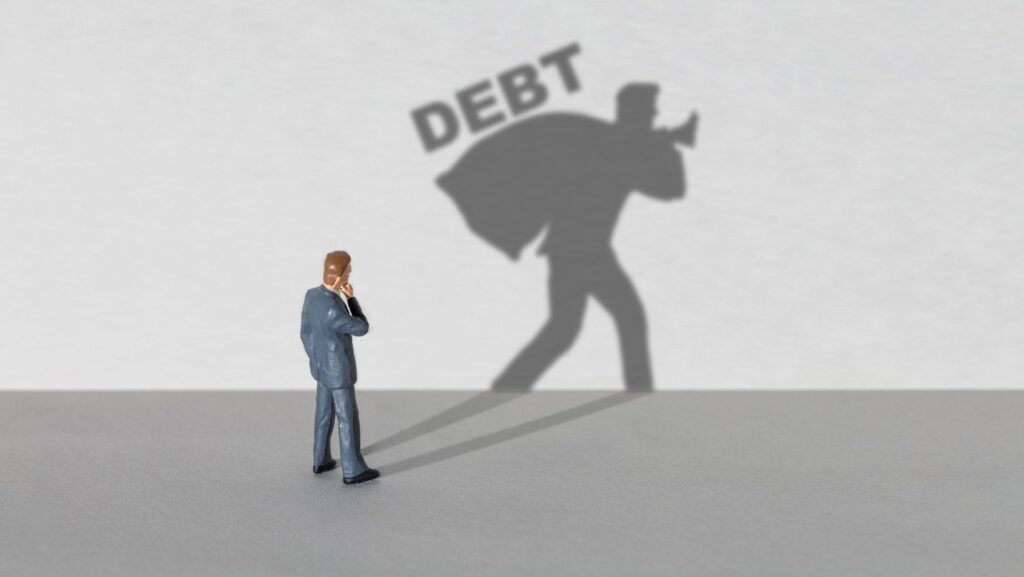Getting out of debt fast requires a clear plan and disciplined action. The most effective approach is to focus on paying more than the minimum monthly payments while cutting unnecessary expenses to free up extra cash. This method accelerates debt reduction and minimizes the interest paid over time.
Besides boosting payments, prioritizing debts with the highest interest rates can save money. It’s also important to avoid accumulating new debt, which can slow down progress. Taking consistent steps can help regain financial control quickly.
Understanding Your Debt Situation
Knowing exactly how much is owed, what types of debt exist, and the signs that indicate financial trouble is essential.
Calculating Total Debt
To manage debt effectively, he or she must start by listing every amount owed. This includes credit cards, personal loans, medical bills, and any other outstanding balances.
It helps to use a spreadsheet or app to track each debt’s current balance, interest rate, and minimum monthly payment. Adding these values gives the total debt figure.
Knowing this number provides a clear target and helps measure progress. Ignoring smaller debts can cause unexpected financial strain later.
Identifying Debt Types
Debt falls into two primary categories: secured and unsecured. Secured debt is backed by collateral, like a mortgage or car loan. Unsecured debt includes credit cards, medical bills, and most personal loans.
Interest rates and repayment terms differ between categories. Secured loans often have lower rates but risk asset loss if payments stop. Unsecured debt tends to have higher rates and may affect credit scores more quickly.
Understanding the type of debt informs which debts to tackle first and how to approach repayment negotiations.
Recognizing Warning Signs
Certain signs suggest debt is out of control. Missing payments, maxed-out credit cards, and receiving collection calls are clear indicators.
Other signs include using credit to cover basic expenses, constantly borrowing to pay other debts, and facing frequent overdraft fees.
These warning signs suggest immediate action is required. Ignoring them can result in increasing balances and damaged credit reports.
Creating a Rapid Debt Payoff Plan

A successful debt payoff plan relies on clear, measurable targets and an effective approach to repayment. It is essential to set practical deadlines and select strategies that maximize available resources while minimizing interest payments.
Setting Realistic Goals
He should begin by calculating the total debt amount and listing interest rates for each. Breaking down the total debt into achievable monthly or biweekly payments helps maintain steady progress without risking financial strain.
Setting deadlines for paying off specific debts keeps motivation high. For example, aiming to clear a $5,000 credit card balance within 12 months means paying about $417 monthly, excluding interest. He should adjust goals based on changes in income or expenses to stay on track.
Tracking progress regularly allows him to identify obstacles early. Consistent monitoring encourages discipline and timely decision-making if goals need modification.
Choosing a Repayment Strategy
He can choose between common repayment strategies like the avalanche method or the snowball method. The avalanche targets debts with the highest interest rates first, saving money over time. The snowball focuses on the smallest debts first, building momentum through quick wins.
Selecting a strategy depends on personal preferences and financial discipline. He should also consider negotiating lower interest rates or consolidating debts if feasible to accelerate repayment.
Prioritizing Debts for Maximum Impact
Debt repayment is most effective when focusing on specific types of debts and their characteristics. Identifying which debts cost the most and which pose greater risks helps create a clearer payoff plan.
High-Interest vs. Low-Interest Debts
High-interest debts, like credit card balances, grow quickly and increase total repayment amounts significantly. They should generally be paid off first to reduce interest accumulation.
Low-interest debts, such as some student loans or mortgages, accumulate less interest over time. Paying them off slower after high-interest debts can free up cash flow without costing as much in added interest.
Understanding Secured and Unsecured Debts
Secured debts are tied to an asset, like a house or car. Missing payments risks losing that asset through repossession or foreclosure. Prioritizing secured debts often prevents significant financial loss.
Unsecured debts lack collateral, such as credit cards or medical bills. They typically have higher interest rates but carry no risk of asset seizure. While important, unsecured debts can sometimes be negotiated or settled, making their management flexible.
Balancing repayment between secured and unsecured debts involves assessing risk and interest impact. Secured debts demand attention to protect assets; unsecured debts may be dealt with faster if they have high rates or penalties.
Boosting Income to Accelerate Debt Repayment
Increasing income can shorten the time needed to pay off debt. It requires practical steps that generate additional cash flow without overwhelming time commitments.
Finding Side Hustles
Side hustles provide a flexible way to earn extra money without quitting a main job. Popular options include freelance writing, rideshare driving, tutoring, or offering delivery services.
Choosing a side hustle depends on skills, available time, and local demand. For example, digital skills can translate into freelancing on platforms like Upwork or Fiverr. Physical tasks may include landscaping or house cleaning.
Consistency matters. Earning a steady supplemental income allows for reliable debt repayments.
Selling Unneeded Assets
Selling unused possessions quickly generates cash for debt payments. Items like electronics, furniture, or collectibles often retain value and can be sold online or locally.
Start by listing items on sites such as eBay, Facebook Marketplace, or Craigslist. Pricing competitively helps items sell faster.
Before selling, gather and clean items to improve appeal. This process can turn clutter into meaningful funds that directly reduce debt balances.
Cutting Expenses for Faster Progress

Reducing monthly spending is critical for accelerating debt repayment. It requires careful planning and taking specific actions to limit unnecessary costs and lower recurring bills.
Creating a Lean Budget
A lean budget focuses on essentials, leaving minimal room for discretionary spending. Start by categorizing expenses into needs and wants. Essentials include housing, utilities, groceries, and transportation. Wants cover dining out, entertainment, and subscriptions.
Track all spending for a month to identify areas to cut. Then, set strict limits on variable costs like dining and shopping. Use cash or budgeting apps to avoid overspending.
Negotiating Bills and Expenses
Negotiating bills can reduce monthly payments significantly. Start with service providers like internet, cable, or phone companies. Call them and ask for available discounts, promotions, or lower rates based on loyalty or competitor pricing.
For credit cards and loans, contact lenders to inquire about lower interest rates or revised payment plans. Always be polite but firm, and have your account details and payment history ready.
Review recurring subscriptions and cancel those not in use or easily replaceable with cheaper alternatives. Negotiate insurance premiums by comparing quotes from multiple companies.
Small reductions in several bills combined can free up extra funds to put toward debt, speeding up repayment.
Utilizing Professional Debt Relief Solutions
Professional debt relief options can provide tailored strategies for managing and reducing debt. Assistance from experts often includes personalized budgeting, negotiating with creditors, and consolidating multiple debts into simpler payments.
Working with a Credit Counselor
Credit counselors assess a debtor’s financial situation to create a manageable repayment plan. They focus on budgeting, spending habits, and debt prioritization. Credit counselors often work through nonprofit agencies, ensuring that their advice aims to improve financial stability without upfront fees.
A credit counselor negotiates with creditors to lower interest rates or waive fees, making payments more affordable. They educate clients on avoiding future debt pitfalls. Engaging a reputable service, such as those vetted by Macco & Corey P.C., can help ensure trustworthy guidance.
Debt Consolidation Methods
Debt consolidation combines multiple debts into one loan or payment, often with a lower interest rate. Common consolidation tools include personal loans, balance transfer credit cards, or home equity loans.
This method simplifies payments, reducing the risk of missing due dates. However, borrowers must consider fees, interest rates, and the loan term carefully. It is important to work with reputable lenders to avoid predatory practices.
Professional advice from firms like Macco & Corey P.C. can help evaluate consolidation options. When consolidation is not feasible, they may suggest other legal measures, including bankruptcy advice or debt settlement alternatives.
Considering Bankruptcy as a Last Resort
Bankruptcy may offer legal relief from overwhelming debt but comes with significant consequences. Understanding the types of bankruptcy and the filing process is essential before proceeding.
Bankruptcy Types Explained
The two most common bankruptcy chapters for individuals are Chapter 7 and Chapter 13. Chapter 7 liquidates non-exempt assets to repay creditors and typically discharges unsecured debts within months. It suits those with limited income and few assets.
Chapter 13 involves a repayment plan lasting three to five years, allowing debtors to keep property while paying down debt over time. This option fits earners with regular income who want to avoid asset liquidation.
A Long Island bankruptcy attorney, such as those at Macco & Corey P.C., can assess which chapter fits a client’s financial situation. This professional advice helps avoid mistakes that could cost assets or future creditworthiness.
The Bankruptcy Filing Process
The process begins by gathering detailed financial information, including debts, income, assets, and expenses. Filing requires submitting official forms and a filing fee to the bankruptcy court.
Next, the debtor must complete credit counseling from an approved agency before filing. After filing, a trustee is appointed to oversee the case, and a meeting of creditors is scheduled.
Throughout the process, working closely with a qualified Long Island bankruptcy attorney ensures all deadlines are met and paperwork is accurate. Macco & Corey P.C. often advises clients on required documentation and court communication, improving the likelihood of a successful discharge or repayment plan confirmation.
Avoiding Debt Traps in the Future
Preventing future debt requires practical financial habits. It involves setting aside money for emergencies and using credit carefully to avoid unnecessary borrowing costs or risks.
Building an Emergency Fund
An emergency fund protects against unexpected expenses like car repairs or medical bills. Experts recommend saving at least three to six months’ worth of living expenses.
This fund should be kept in an accessible, low-risk account such as a high-yield savings account. Contributions should be consistent, even if small, to build the fund steadily.
Smart Use of Credit
Using credit responsibly means understanding interest rates, fees, and repayment terms before borrowing. People should only borrow what they can repay within the billing cycle to avoid interest charges.
Maintaining low credit utilization—ideally below 30% of available credit—helps protect credit scores. It is wise to monitor statements regularly to detect errors or fraud early.
Seeking Legal Support for Complex Debt Issues
Legal support can be essential when debt problems reach a point where negotiation and budgeting are insufficient. Identifying the right time for expert help and selecting competent legal counsel makes managing complex debt more structured and effective.
When to Consult a Debt Attorney
A debt attorney becomes necessary when debt issues involve lawsuits, wage garnishments, or potential bankruptcy filings. If creditors have initiated formal collection actions or threaten foreclosure, legal advice can protect the debtor’s rights.
Clients often seek help with Chapter 7 or Chapter 13 bankruptcy filings. In these cases, the attorney evaluates eligibility and guides through the paperwork and court procedures. On Long Island, specialized firms like Macco & Corey P.C. have experience navigating state and federal debt laws.
Choosing the Right Legal Representation
Selecting an attorney experienced in debt law has a direct impact on the outcome. Look for a Long Island Bankruptcy Attorney with a proven track record and positive client reviews.
Factors to consider:
- Specialization: Focus on bankruptcy and debt resolution.
- Transparency: Clear explanation of fees and processes.
- Communication: Availability and straightforward advice.
- Credentials: Membership in local bar associations and relevant certifications.
Macco & Corey P.C. is recognized locally for handling bankruptcy and debt defense. Their familiarity with Long Island’s legal environment benefits clients facing complex debt issues.
Choosing carefully helps avoid costly delays and ensures the legal strategy aligns with the debtor’s financial goals.
